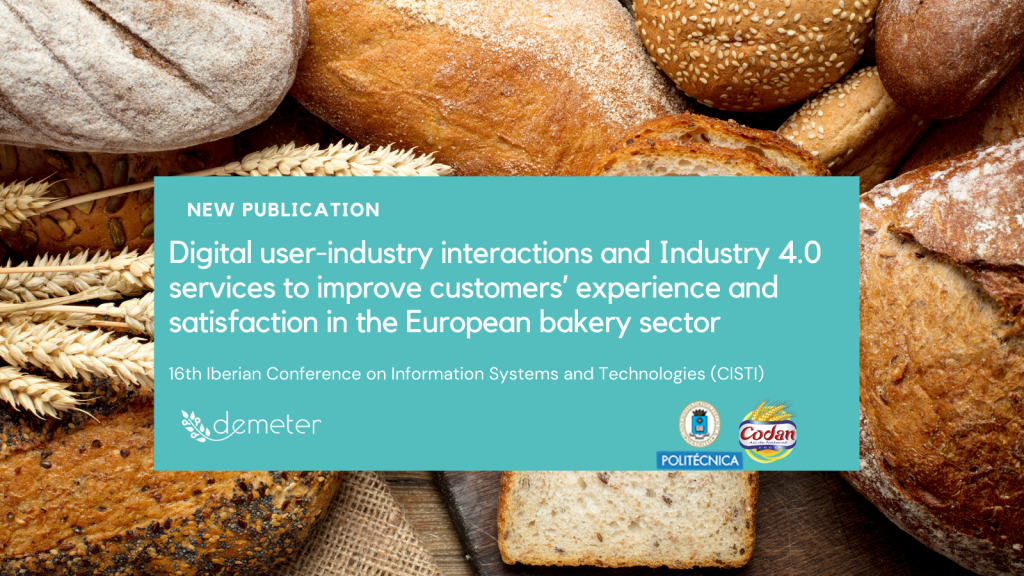
Researchers from DEMETER partners, Universidad Politécnica de Madrid (UPM) (Borja Bordel, Ramón Alcarria and Tomás Robles) and Codan (Gema de la Torre and Isidoro Carretero) have published a new paper at the 16th Iberian Conference on Information Systems and Technologies (CISTI) which took place from 23-26 June 2021. The paper, ‘Digital user-industry interactions and Industry 4.0 services to improve customers’ experience and satisfaction in the European bakery sector’ shares results from the use case in DEMETER focused on transparency in the supply chain. The full abstract is available below:
Future Industry 4.0 is focused on improving production processes through the employment of digital services and technologies. One of the potential approaches to this new paradigm is the creation of information flows across the entire value chain to empower users, increase their knowledge about the product they are buying and feedback producers with data about the customers’ opinions, preferences, and recommendations. To allow a transparent path for information in the value chain, new digital platforms and tools are needed to connect users, producers, and suppliers. DEMETER is a European project focused on improving the efficiency of agri-food sector, according to Industry 4.0 principles. In this paper, we are describing the use case of DEMETER project focused on bakery industry. Five different experiments focused on sharing four different information sources, together with the corresponding tools to guarantee the reliability and transparency of that information, are planned. Recently, results from the first experiment have been obtained and are reported in this paper. Results show how users’ satisfaction highly increases when enriched and personalized production information about products is available through, for example, mobile applications. In the future, this mechanism will include more information from suppliers and other related agents to analyze if this also represents a relevant increase in the users’ satisfaction
The full paper is available here


